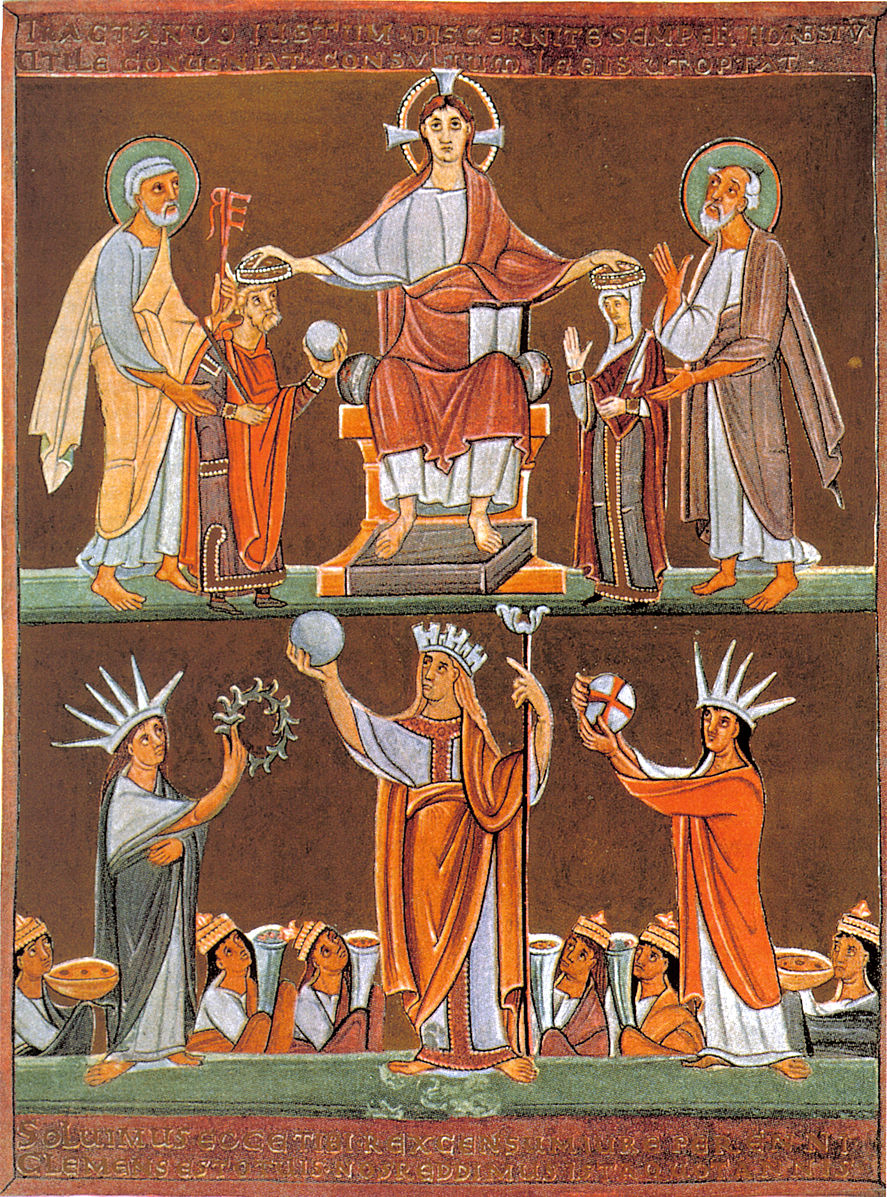CUNEGUNDA: FROM EMPRESS TO SERVANT TO SAINT

[Above: From the Pericope book of Henry II (in Bavarian State Library, CIm 4452, Fol. 2r); Top half, the small figures of Henry II and Cunegunde are crowned by Christ, behind them are Bamberg's patrons Peter and Paul (shown large as their importance merits). Bottom: people pay homage to personifications of the Roman, Gallic, and German Pericopes of Henry II / public domain from Middle Ages, Wikimedia]
ALTHOUGH CUNEGUNDA WAS EMPRESS of the Holy Roman Empire and is regarded as a saint in several Christian traditions, little is known of her. She was from Luxembourg, the daughter of Siegfried I and his wife Hedwig, but scholars debate Hedwig’s ancestry.
Born around 975, Cunegunda married Henry, Duke of Bavaria, in 999. After he was crowned King of the Germans in 1002, she was also crowned queen. Later, she was crowned empress beside her husband when, in 1014, at St. Peter’s Basilica, Rome, he became Holy Roman Emperor Henry II.
Cunegunda was no wallflower. She participated in imperial councils, managed the king’s business during his absences, and (according to tradition) was active in his charitable endowments. She donated her own dowry to fund the diocese of Bamberg when it was founded.
The pair had no children. Because of this, legend claimed that she had wanted to be a nun and convinced her husband to remain her spiritual partner in a chaste marriage. Because this story first emerged decades after her death, scholars doubt its authenticity.
Henry died in 1024 and Cunegunda and one of her brothers became regents of the empire until a successor (Conrad II) was elected. About twenty years later, Pope Eugenius III declared Henry a saint.
One year after Henry’s death, Cunegunda retired to Hesse, Germany, where she had founded a Benedictine nunnery. She insisted that no one treat her as the empress she had been. Instead she took the role of a servant and performed the lowest and dirtiest jobs that needed doing.
Cunegunda died on this day 3 March, 1039 (1040 under the new calendar, although some accounts place her death in 1033). Immediately the common folk regarded her as a saint. The monks of Bamberg called for her canonization.
For a canonization to take place, she had to be shown to have done miracles. A life was written. Among its miraculous claims was that, accused of adultery, she had walked barefoot and unharmed over twelve red hot ploughshares. She put out a fire that threatened to engulf her bed by making the sign of the cross. She slapped her frivolous niece Judith in the face, leaving an imprint that lasted the rest of the girl’s life. Pope Innocent III accepted these tales as true and declared her a saint in March 1200.
—Dan Graves
----- ----- -----
For more stories about Christian women, read Great Women in Christian History






